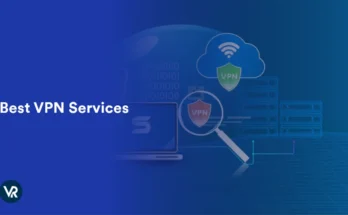The global shift to remote work has completely transformed how companies operate. With this transformation comes the growing need for reliable IT support services for remote teams. Whether you’re managing a team of five or five hundred, one thing is clear: technical issues can’t be ignored, and downtime costs money.
As remote work becomes more common, businesses need dependable remote IT support that can keep employees connected, secure, and productive—no matter where they are. In this guide, we’ll explore why remote IT support services are essential, what to look for in a provider, and how to build a system that keeps your team running smoothly.
Why Remote Teams Need Specialized IT Support
Remote work presents unique challenges that traditional office IT setups don’t face. Here are a few reasons why IT support for remote teams is crucial:
- No in-person tech help: Remote employees can’t just walk to the IT department for help.
- Different time zones: Teams spread across the globe need 24/7 IT support.
- Increased cyber threats: Home networks are often less secure, making companies vulnerable.
- Device variety: Employees use personal devices, which vary in security and performance.
Having dedicated remote IT support services ensures that your team can stay focused on work instead of troubleshooting issues or worrying about data security.
Core Services Offered by Remote IT Support Teams
When evaluating IT support for remote employees, look for providers that offer the following core services:
1. Help Desk Support
The backbone of remote IT support. Your team should be able to contact help desk agents via:
- Phone
- Live chat
- Support ticket systems
Look for a help desk that offers 24/7 availability, especially if your team operates across time zones.
2. Device Management
Remote IT support should help with:
- Setup and configuration
- Remote troubleshooting
- Patch management
- Mobile device management (MDM)
Managing devices remotely reduces downtime and ensures compliance with company policies.
3. Cybersecurity Protection
With remote work, the risk of data breaches skyrockets. Your IT support provider must include:
- Antivirus and anti-malware tools
- Firewall management
- Two-factor authentication (2FA)
- VPN setup
Security is not optional—remote work IT security must be prioritized.
4. Cloud Management
Most remote teams rely on cloud-based tools like Google Workspace, Microsoft 365, Dropbox, or AWS. Your IT support team should be able to:
- Manage cloud accounts
- Assist with integrations
- Provide access control and monitoring
- Help with file recovery and backup
5. Collaboration Tool Support
Your support provider should know tools like:
- Slack
- Zoom
- Microsoft Teams
- Asana or Trello
They should handle software updates, permissions, and user training as needed.
Benefits of Using Remote IT Support Services
Investing in the right support system brings measurable benefits for your team:
✅ Reduced Downtime
Fast tech support means fewer delays and more productive work hours.
✅ Improved Cybersecurity
IT professionals implement and monitor robust protection systems against threats.
✅ Scalable Solutions
Whether your team is growing or downsizing, IT services can scale accordingly.
✅ Cost Savings
Outsourced IT support is often cheaper than building an in-house team—especially for startups or small businesses.
✅ Focus on Core Business
Let IT experts handle tech problems while your team focuses on strategy, creativity, and growth.
Choosing the Right IT Support Provider for Remote Teams
Not all providers are the same. Here’s how to find the best remote IT support services for your company:
1. Check Experience with Remote Environments
Choose a provider with proven experience supporting distributed teams. Ask for case studies or client testimonials.
2. Evaluate Communication Options
Reliable IT support must be easy to reach. Look for:
- Live chat and phone support
- Dedicated account managers
- Fast ticket response times
3. Assess Security Standards
Make sure they offer enterprise-grade security, including:
- Data encryption
- Endpoint security management
- Compliance with GDPR, HIPAA, or SOC 2
4. Look for Customization
Your business has unique needs. A good provider should offer custom IT support packages tailored to your team’s size, tools, and workflow.
5. Test Their Onboarding Process
How they onboard new team members matters. Look for:
- Smooth device setup
- User account provisioning
- Training support
In-House vs. Outsourced Remote IT Support
Should you build an internal IT team or hire an external provider? Here’s a comparison:
| Feature | In-House IT Team | Outsourced Remote IT Support |
|---|---|---|
| Cost | High salaries and overhead | Subscription or hourly pricing |
| Scalability | Difficult to scale quickly | Easily scalable |
| Expertise | Limited to team experience | Broad expertise across platforms |
| Availability | Often 9-5 only | 24/7 support possible |
| Setup Time | Takes months to hire and train | Can be deployed immediately |
For remote teams, outsourced IT support services offer more flexibility, better pricing, and faster implementation.
Popular Remote IT Support Providers in 2025
Here are some top-rated IT support companies for remote teams:
1. Electric.ai
Specializes in real-time IT support for remote companies, including device setup and software management.
2. NinjaOne
Offers endpoint monitoring, patch management, and remote support tools ideal for distributed teams.
3. Turing IT Support
Matches businesses with remote IT professionals trained to handle help desk, cybersecurity, and cloud services.
4. HCL Technologies
Provides enterprise IT support services, great for global companies with hybrid and remote models.
5. BairesDev
A fast-growing nearshore IT support company known for its cost-effective and scalable remote IT services.
Best Tools for Remote IT Support Teams
Your provider should be using (or allow integration with) these essential tools:
- TeamViewer: For remote desktop access
- AnyDesk: Lightweight remote control software
- Freshservice: Modern service desk tool
- Jira Service Management: ITSM platform for ticket handling
- ManageEngine: For endpoint security and patch updates
These tools allow real-time help, issue tracking, and system health monitoring—critical for remote workforce support.
Securing Your Remote Workforce: Cybersecurity Must-Haves
With your team working from home, here are the key security measures every IT support team should implement:
🔐 VPNs
Create a secure tunnel between employee devices and company resources.
🔐 Antivirus Software
Ensure all devices—personal or company-owned—are protected.
🔐 Firewalls
Protect networks from unauthorized access and malicious traffic.
🔐 Access Control
Limit sensitive data access to only those who need it.
🔐 Security Training
Teach employees how to spot phishing attacks and avoid common threats.
Cybersecurity is not just an IT issue—it’s a business-critical requirement for remote team protection.
Training & Onboarding Support for Remote Employees
A strong IT support provider helps with:
- Virtual onboarding
- Software installations
- Security compliance training
- Ongoing tech support and troubleshooting
Your remote employees should feel just as supported as in-office staff—if not more.
Common Remote IT Issues & How Support Teams Solve Them
Here are frequent problems and how IT support teams handle them:
| Problem | Solution Provided by IT Support |
|---|---|
| Slow internet | Guide employee through router settings and tests |
| Device not starting | Remote diagnostics and step-by-step troubleshooting |
| Software not working | Reinstallation, patches, or alternative solutions |
| VPN connectivity issues | Adjust firewall or router settings |
| Phishing emails received | Email quarantine and user education |
Having remote technical support services in place means your team isn’t left scrambling when issues arise.
Budgeting for Remote IT Support Services
Pricing for IT support for remote workforces varies based on:
- Team size
- Required services
- Support hours (24/7 vs. business hours)
- Level of security needed
On average, businesses spend between $50–$150 per user/month for fully managed support. It’s an investment—but the cost of unmanaged tech issues is much higher.
Future Trends in Remote IT Support
Here’s what the future looks like:
- AI-powered chatbots for faster help desk responses
- Self-healing systems that fix issues automatically
- Zero trust security models for tighter access control
- Augmented reality (AR) remote support for hardware troubleshooting
- Predictive analytics to detect and prevent issues before they occur
These innovations will make remote IT support faster, smarter, and more proactive.
Final Thoughts: Support That Empowers Remote Work
Remote work is here to stay, and businesses must adapt by implementing strong, reliable, and scalable IT support systems. From troubleshooting daily issues to protecting company data, IT support services for remote teams are essential.
Whether you build an internal team or hire an outsourced provider, the goal is the same: keep your team connected, protected, and productive—anywhere in the world.
Invest in great IT support now, and you’ll build a future-proof foundation for your business’s success in the remote era.




